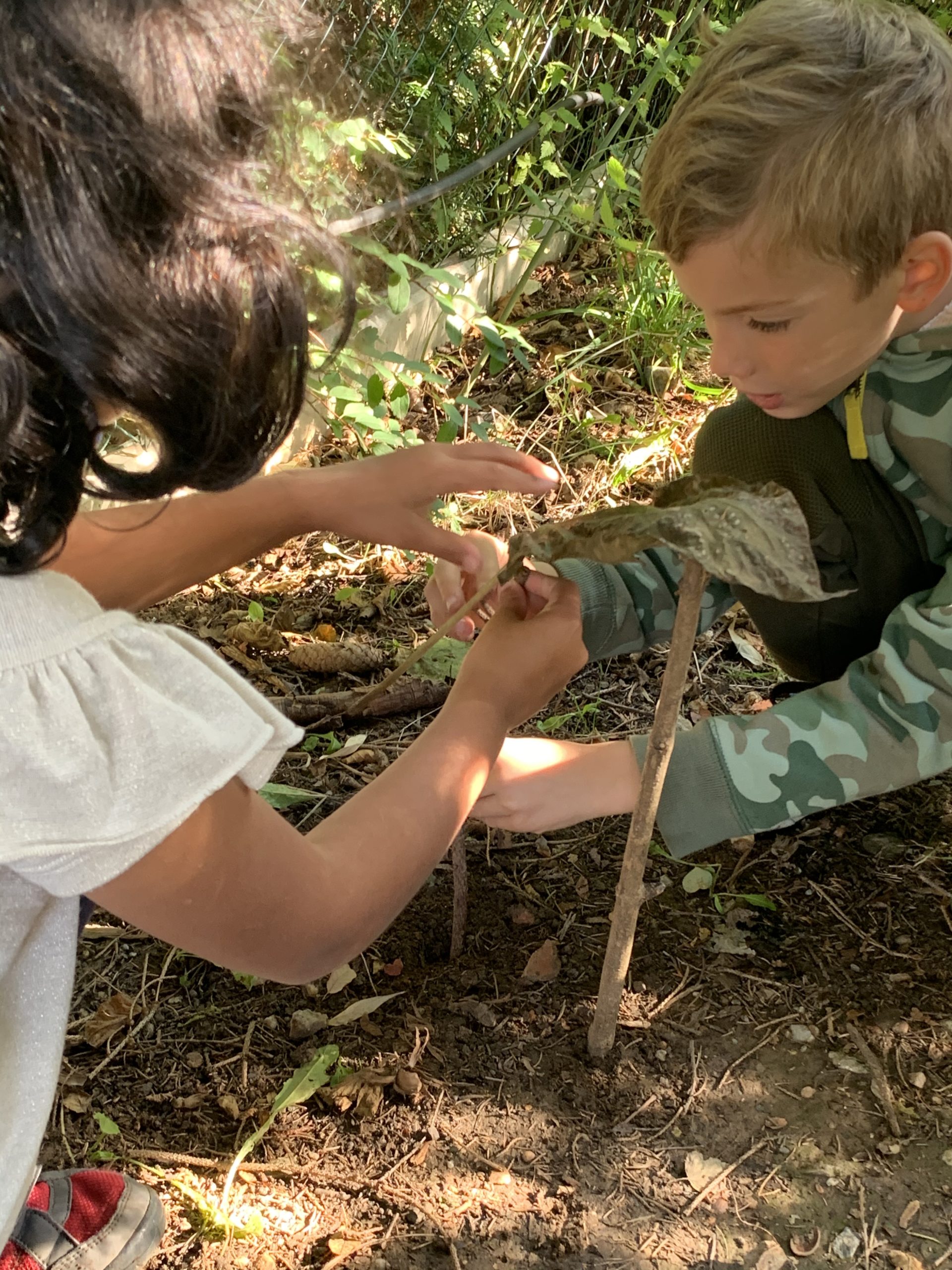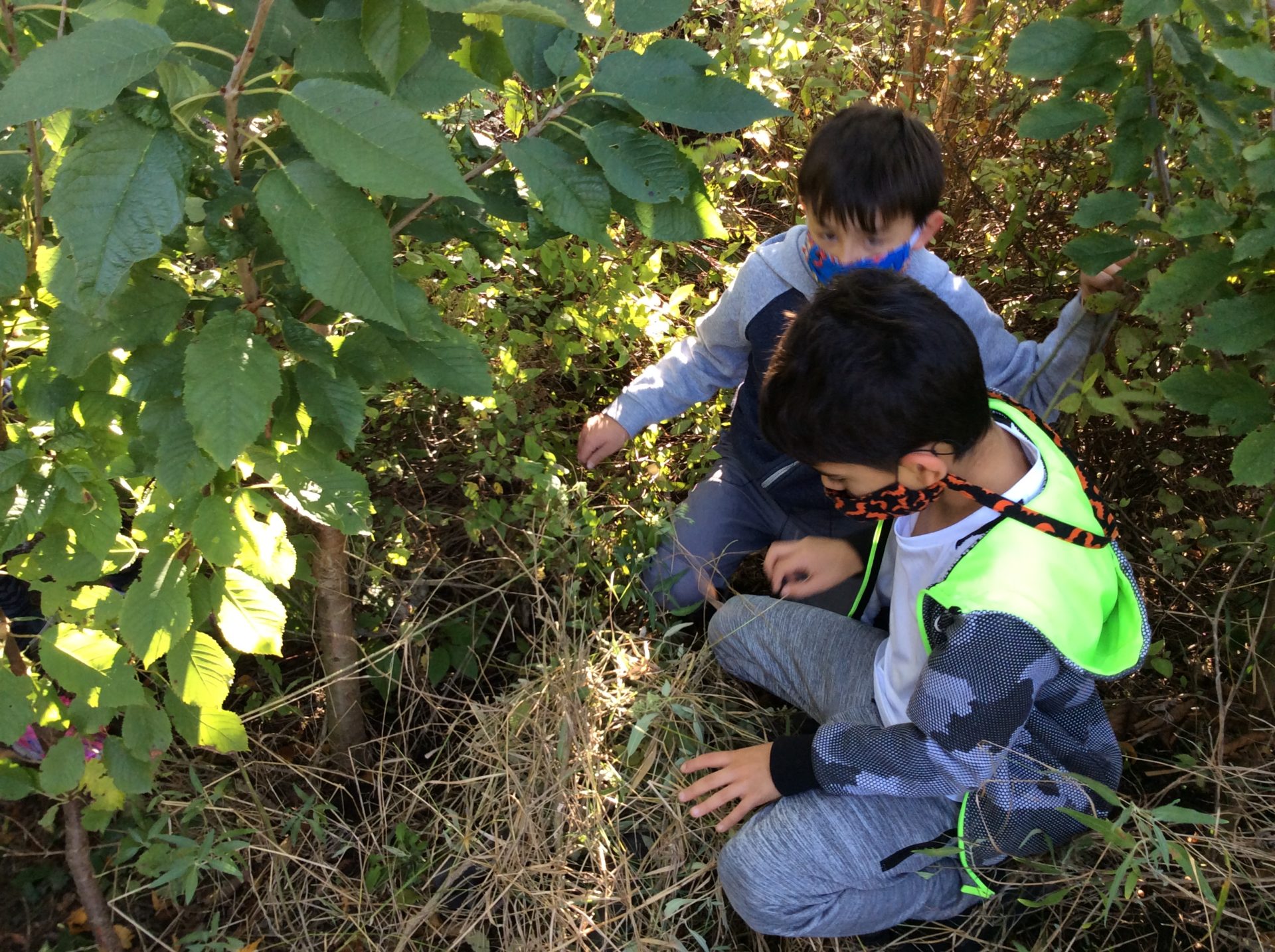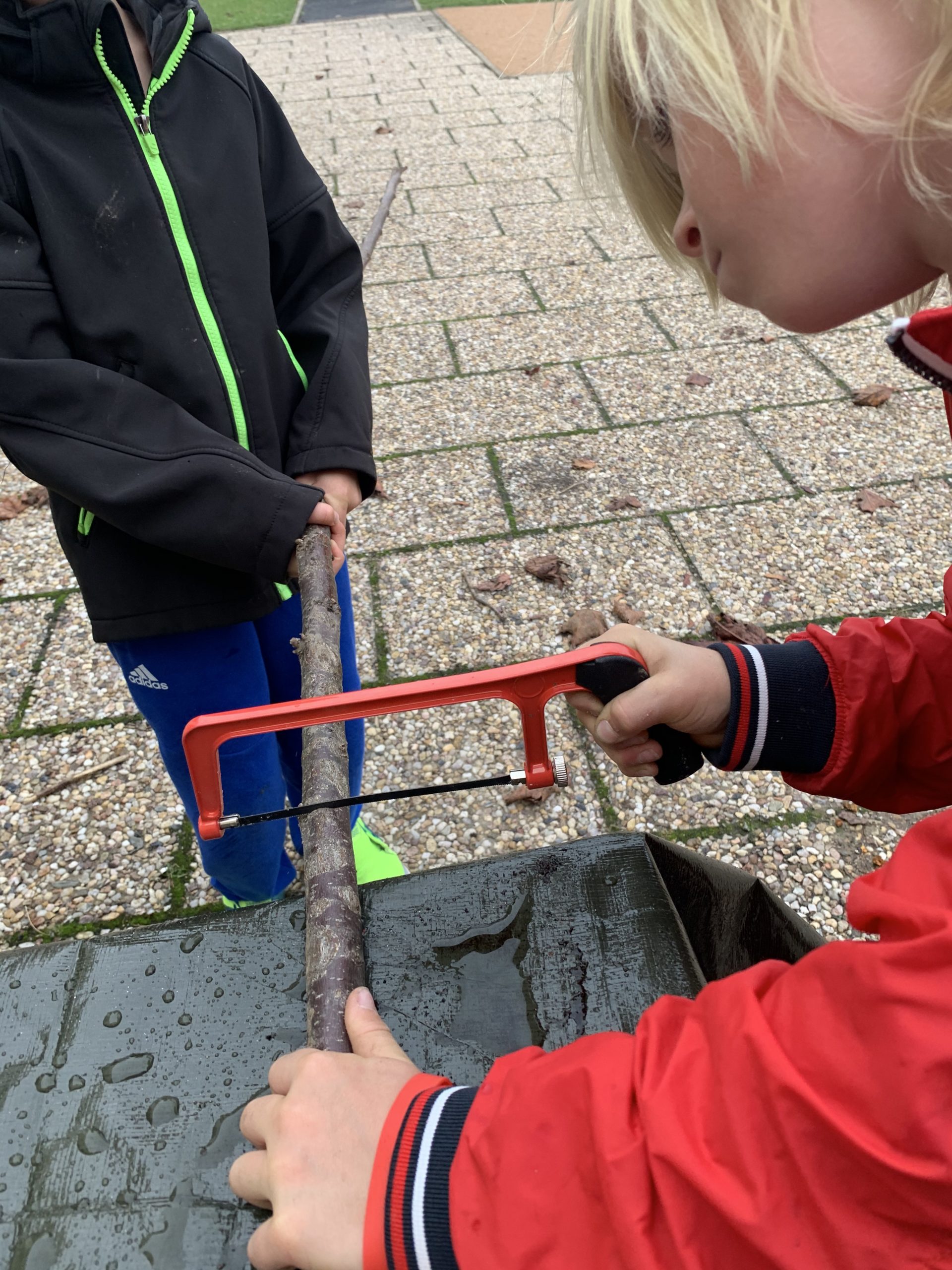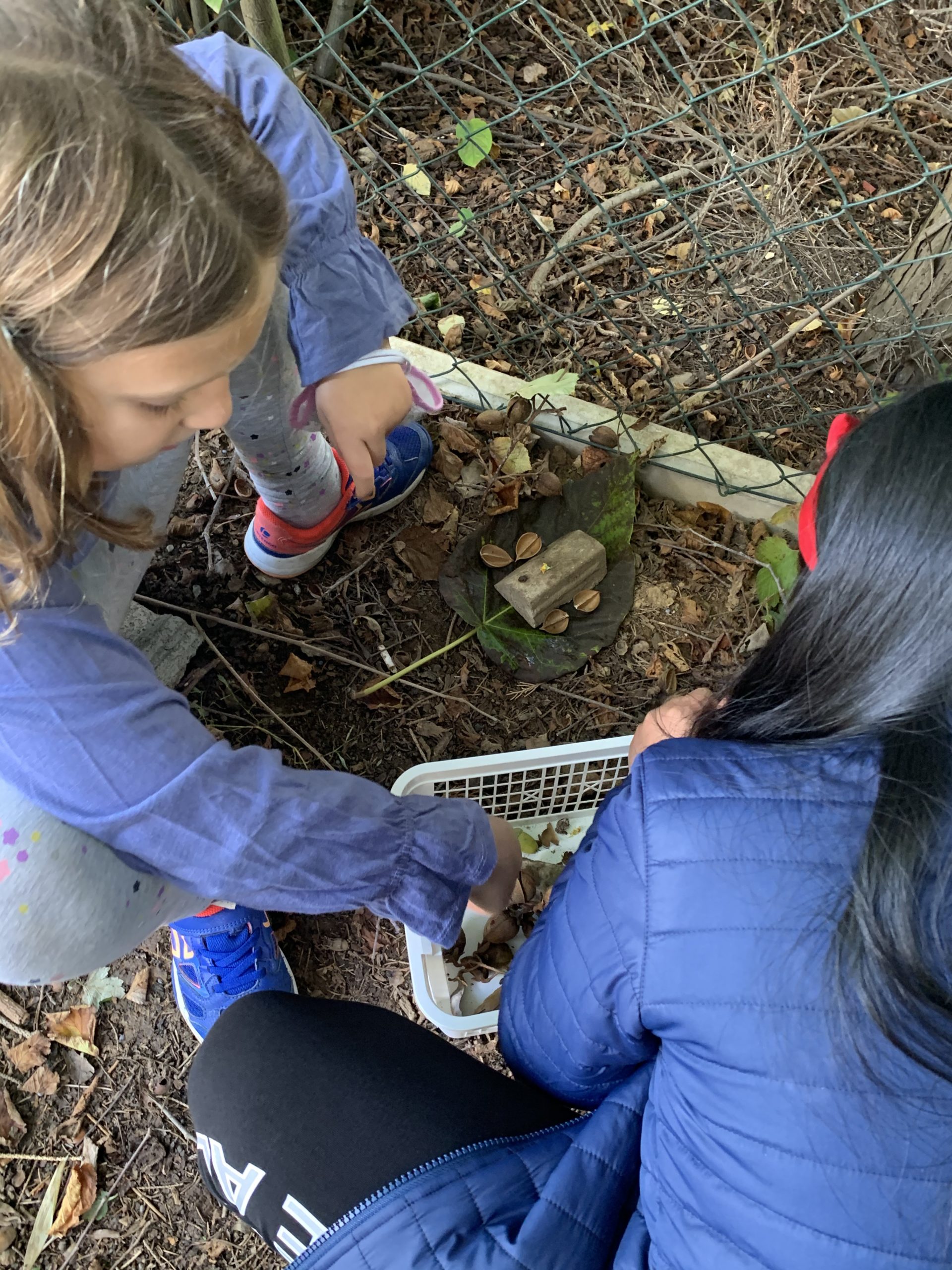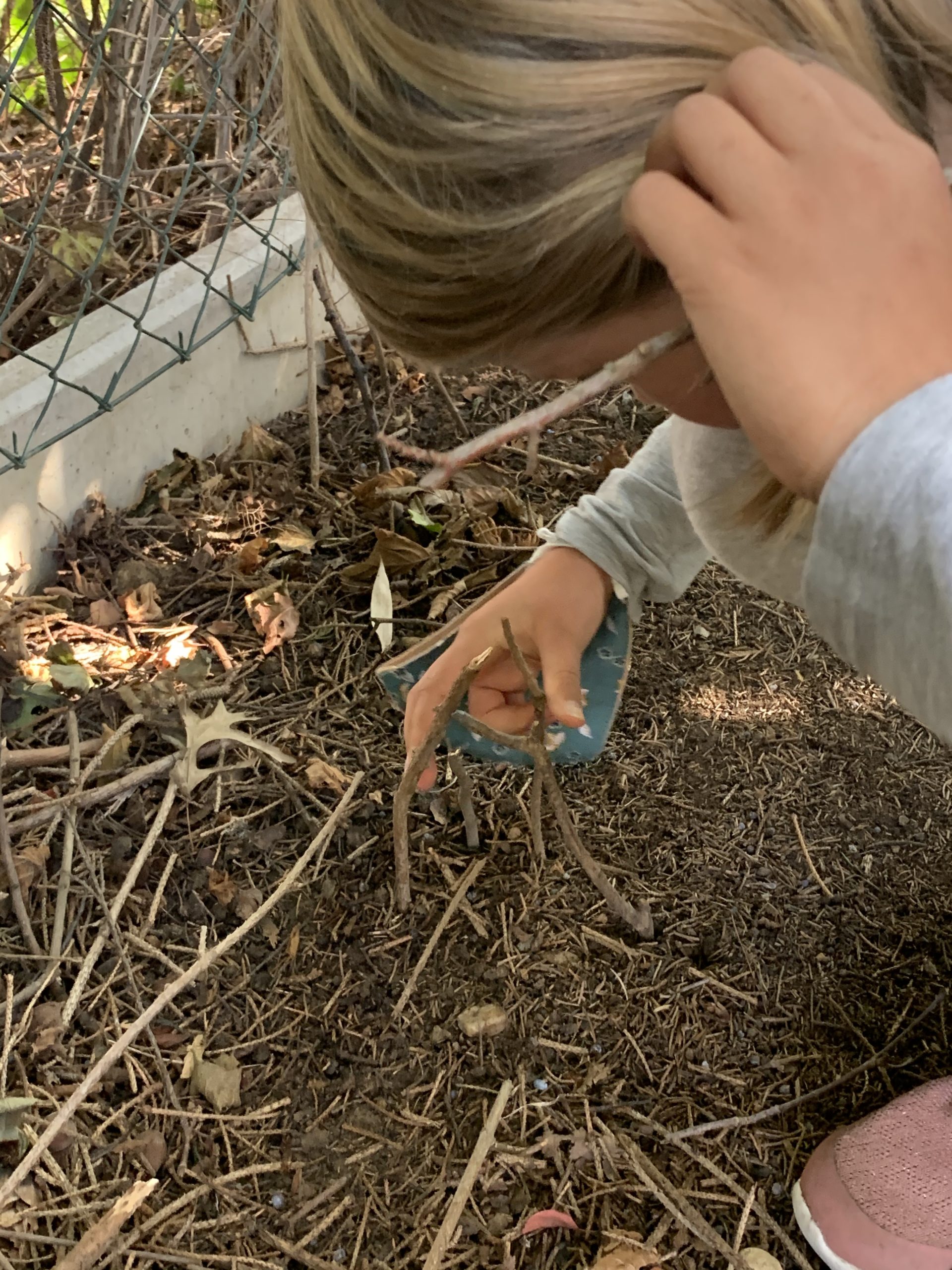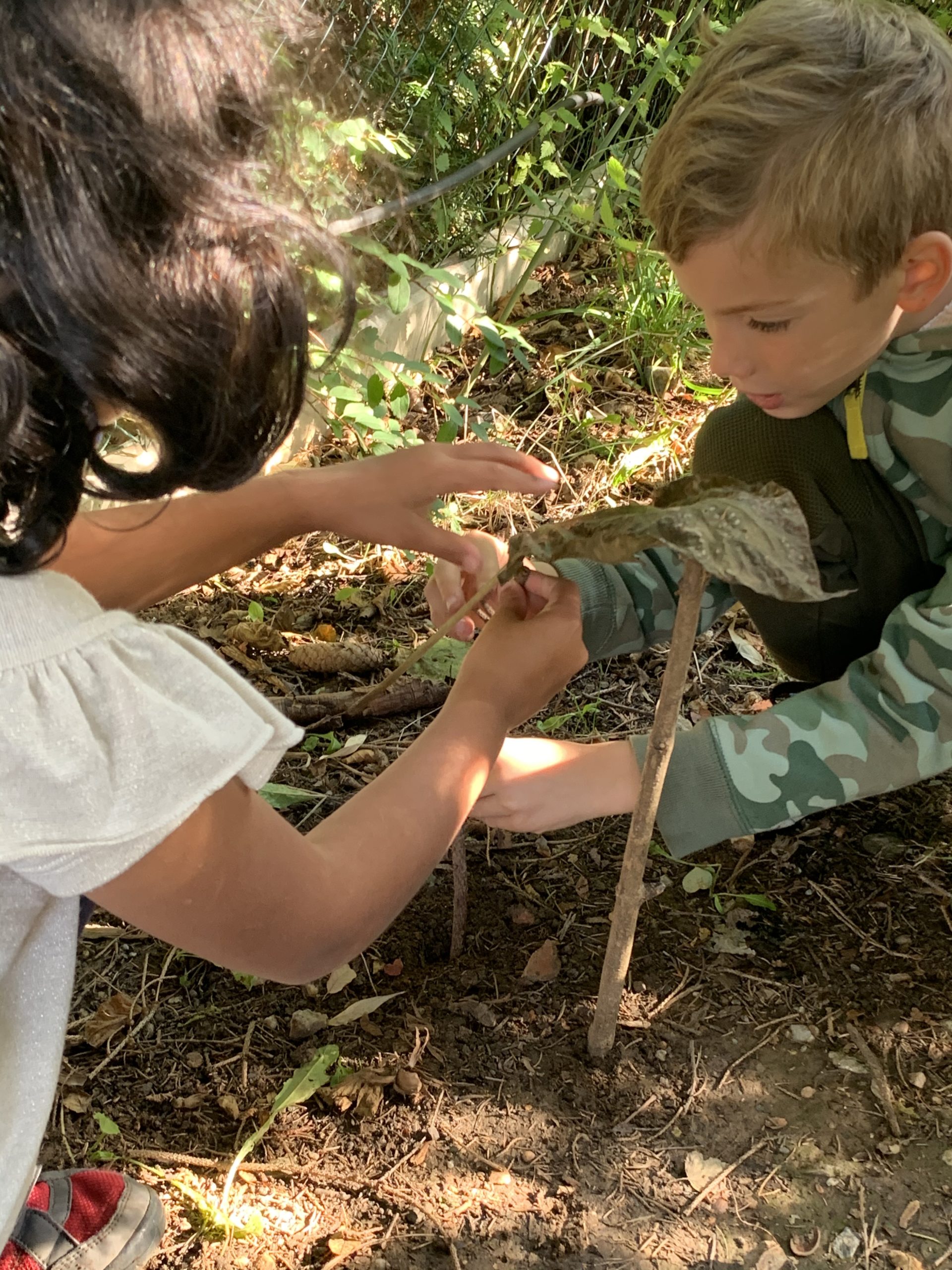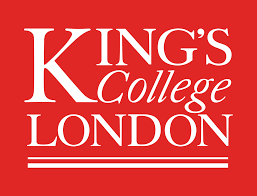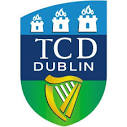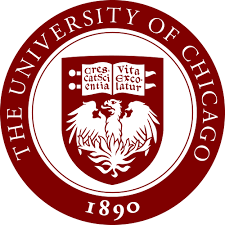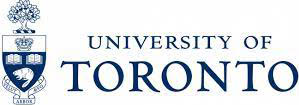A Fairy House is just as it says, a house for the fairies. This is a wonderful way for children to let their imagination run wild outdoors and it also gives them a sense of perspective as they create miniature versions of household items and furniture for little “people”. It’s amazing that even children who adamantly say that fairies don’t exist, get thoroughly immersed in their task with enthusiasm! And if there is a child who really feels strongly about making a house for something that doesn’t exist, it can always be a house for the forest creatures or bugs.
To be honest most children are just excited to be outside and working with natural materials that this just doesn’t come up very often anyway! The only stipulation for building a fairy house is that all the materials used should be found in nature, for example, cones, leaves, sticks, stones, seeds, flowers, etc. and that they should not be broken from live plants, only found.
As part of their ME-Time with Ms. Wimpey, third graders have been doing research into various aspects of nature. Initially they went out and collected natural items in the environment. After having some time exploring in the Outdoor Learning Classroom, Ms. Wimpey set up a menu on Seesaw and they could decide where to take their project next. A strong interest was in the building of fairy houses. So last week we climbed out the classroom window into a world of fairy houses! Our plan was to build them near the pond but a last minute hiccup meant that we had to look for a new location so we chose an area behind the bushes near the Mala Sarka entrance.
he first job was to collect natural items for the fairy houses – although there may not be the abundance of materials that there might be in the forest, we actually have many things to choose from in the school grounds due to all the different types of trees and bushes that have been planted there. The collections included pinecones, sticks, leaves, acorns and their shells, flowers and stones. The children worked in pairs to build their fairy houses and also collaborated across groups to solve problems. It was so interesting to hear the conversations as children figured out how to make things work and how to create miniature items for their houses. Some of the questions that the children solved together were:
How can we make the sticks stand to construct a teepee?
What shall we put in the salad bowl (fashioned from an acorn shell)so it looks like food?
Could we use the fence as support if we move the house near there?
How can we create a ladder up to our fairy house in the tree?
Could these acorn shells look like slippers if we find two the same?
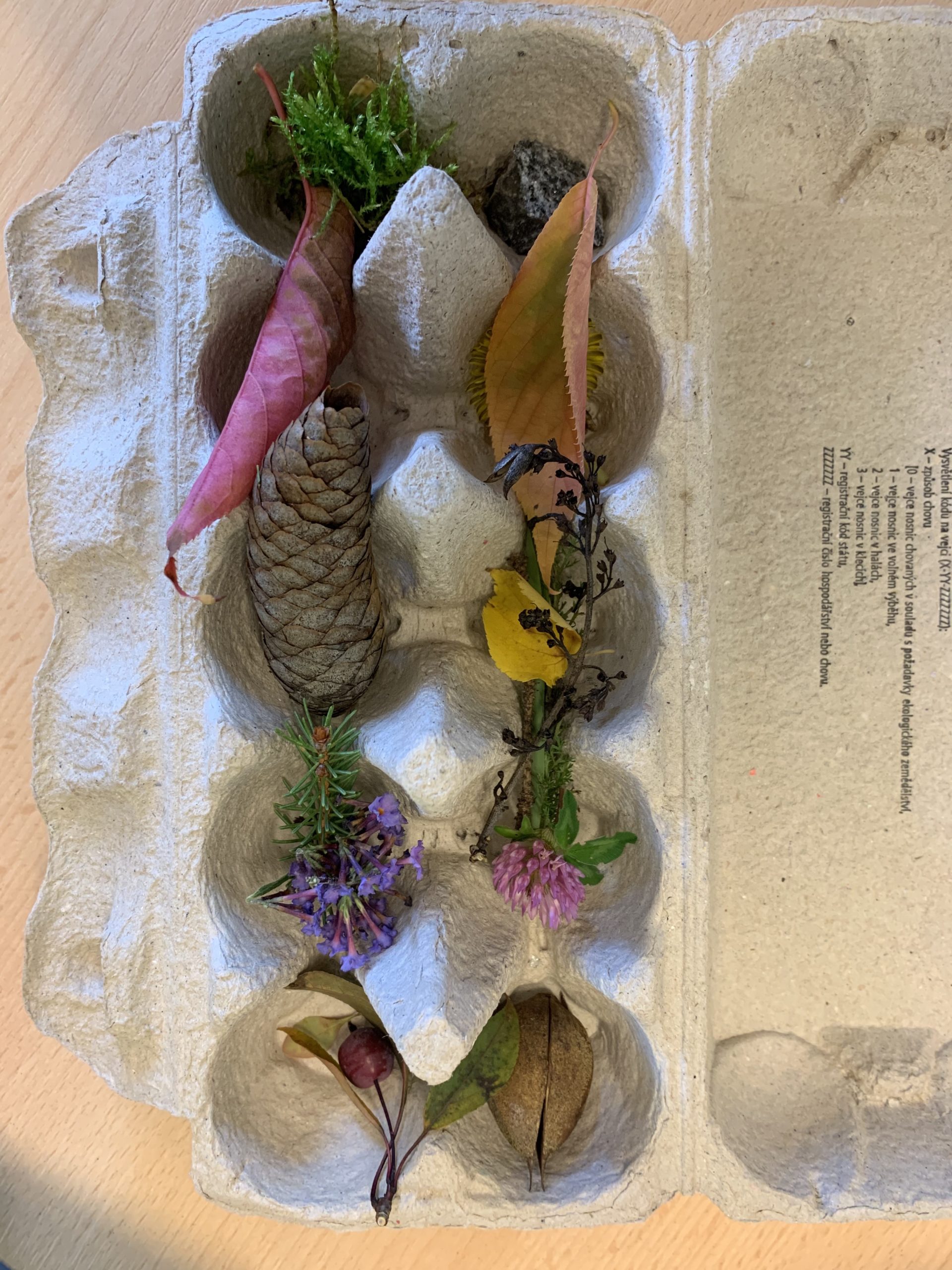
A few days later in homeroom time a group of second grade students constructed fairy and bug houses (facilitated by Ms. Pamela) further along the path near the bushes. Again working in groups, the children worked together to plan, gather materials and build their houses. It is always quite amazing to see the enthusiasm, imagination, creativity, ingenuity, collaboration and engagement employed in such a simple activity. In both cases a 40 minute session flew past and the children wanted to spend longer in nature.
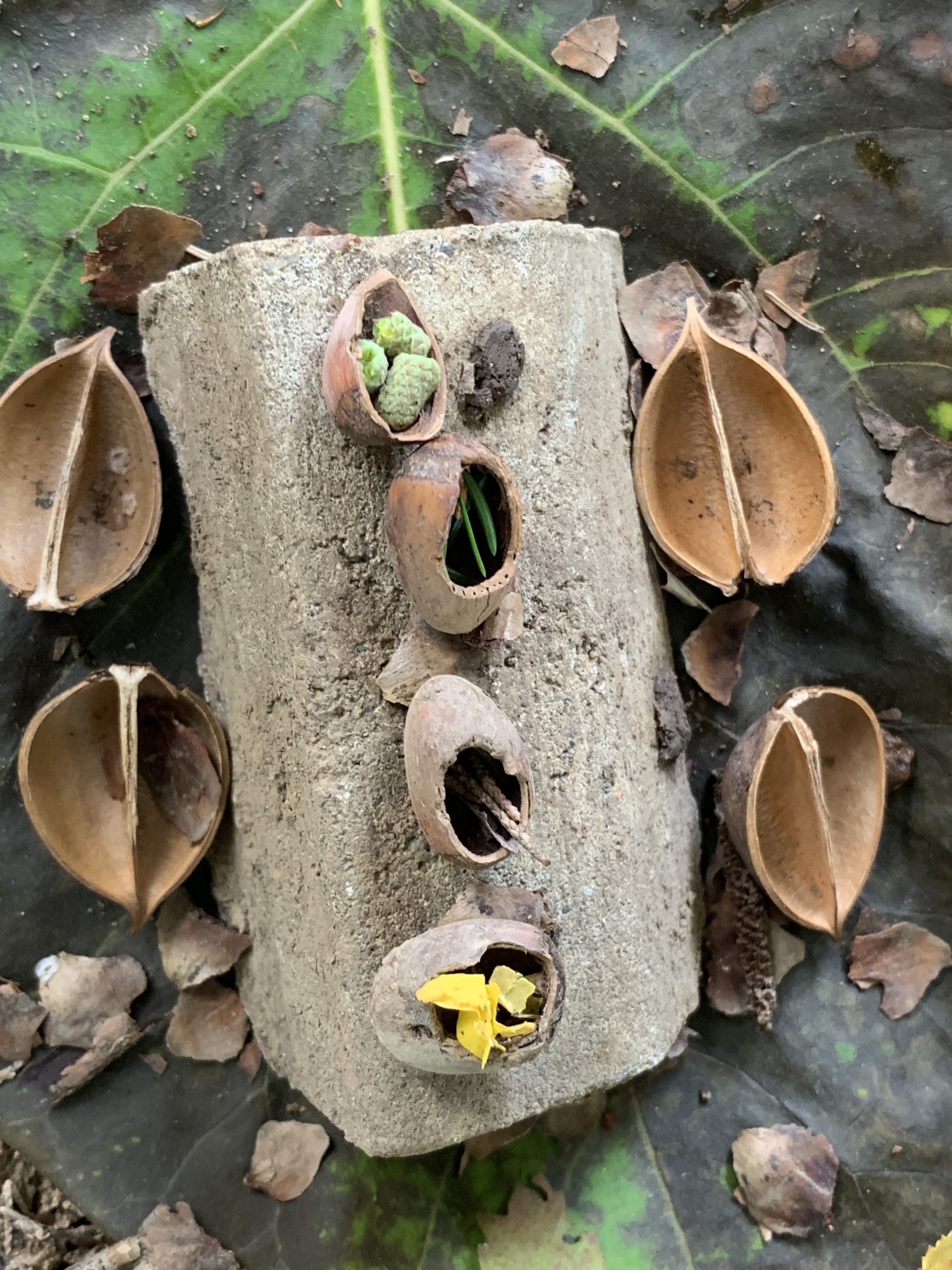
Some of the benefits of fairy house building are:
- Seeing things from a different perspective and adapt things to fit with that perspective (that of fairies and small creatures)
- Making a plan and executing that plan with limited resources that can only be found in the natural environment
- Collaborating with their peers and negotiating when they have different ideas and opinions
- Connecting with nature through the use of different senses and appreciating the variety of natural materials around them
- Concentrating for long periods of time as they get engrossed in working out details
- Problem solving as children figure out how to use items for different purposes
